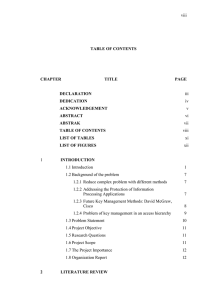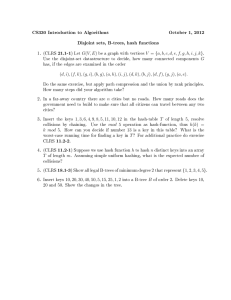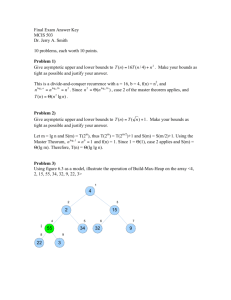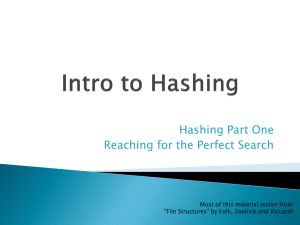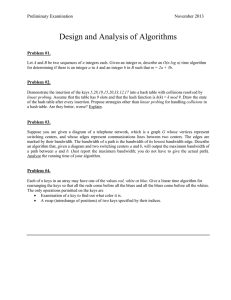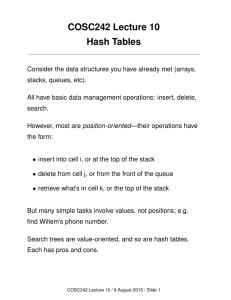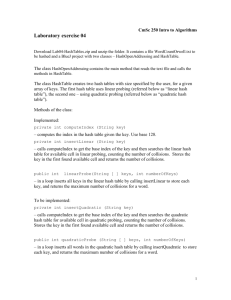Tutorial
advertisement
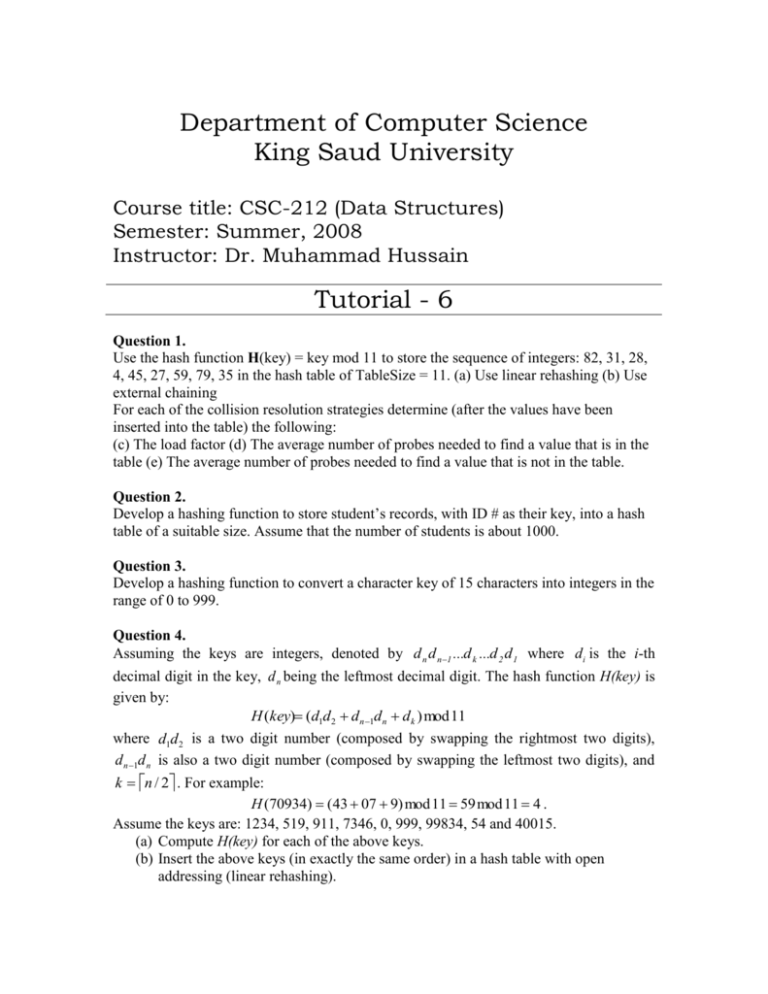
Department of Computer Science King Saud University Course title: CSC-212 (Data Structures) Semester: Summer, 2008 Instructor: Dr. Muhammad Hussain Tutorial - 6 Question 1. Use the hash function H(key) = key mod 11 to store the sequence of integers: 82, 31, 28, 4, 45, 27, 59, 79, 35 in the hash table of TableSize = 11. (a) Use linear rehashing (b) Use external chaining For each of the collision resolution strategies determine (after the values have been inserted into the table) the following: (c) The load factor (d) The average number of probes needed to find a value that is in the table (e) The average number of probes needed to find a value that is not in the table. Question 2. Develop a hashing function to store student’s records, with ID # as their key, into a hash table of a suitable size. Assume that the number of students is about 1000. Question 3. Develop a hashing function to convert a character key of 15 characters into integers in the range of 0 to 999. Question 4. Assuming the keys are integers, denoted by d n d n1 ...d k ...d 2 d 1 where di is the i-th decimal digit in the key, d n being the leftmost decimal digit. The hash function H(key) is given by: H (key) (d1d 2 d n 1d n d k ) mod 11 where d1d 2 is a two digit number (composed by swapping the rightmost two digits), d n 1d n is also a two digit number (composed by swapping the leftmost two digits), and k n / 2 . For example: H (70934) (43 07 9) mod 11 59 mod 11 4 . Assume the keys are: 1234, 519, 911, 7346, 0, 999, 99834, 54 and 40015. (a) Compute H(key) for each of the above keys. (b) Insert the above keys (in exactly the same order) in a hash table with open addressing (linear rehashing). (c) Find the number of probes required to search for keys 54 and 11 in the above hash table. (d) Repeat part (b) using an external chaining hash table. Question 5. Using the modulo-division method for hash keys determination and linear probing for collisions resolutions, store the keys shown below in a hash table of size 19. 224562, 137456, 214562 140145, 214576, 162145 144467, 199645, 234534 (i) How many collisions occurred? Question 6. Repeat question 5 using external chaining method for collisions resolution. Compare the results in this exercise with the results you obtained in exercise 5. Question 7. Repeat exercise 5 using the digit-extraction method (first, third, and fifth digits) for the key determination and a linear probing for collisions resolutions.


